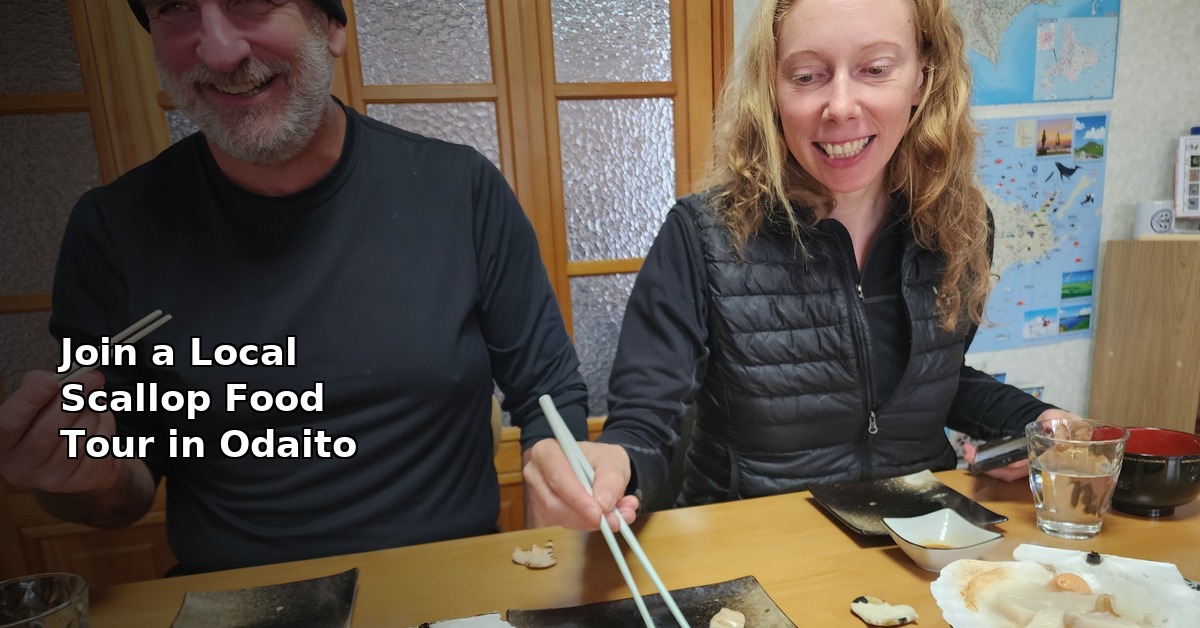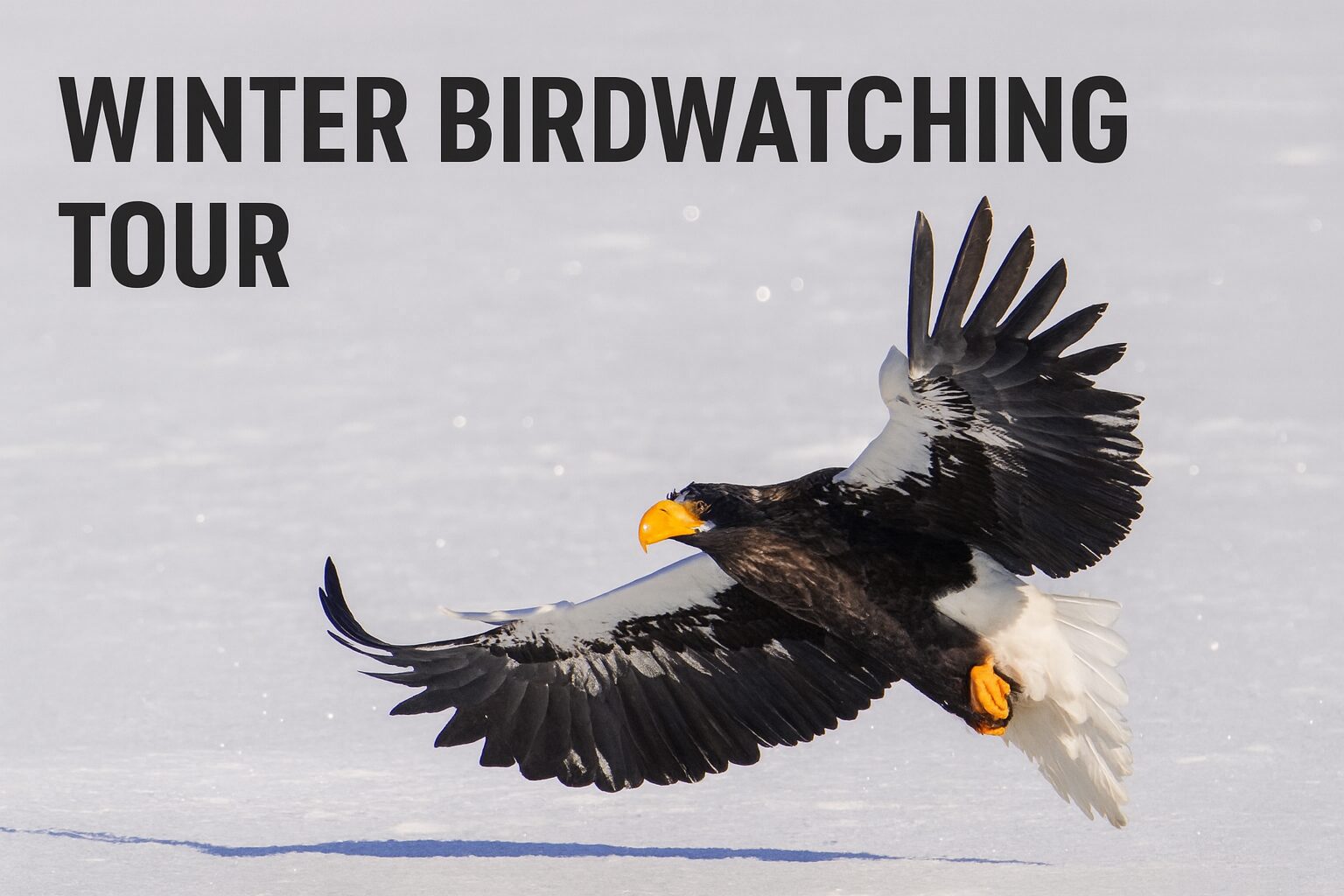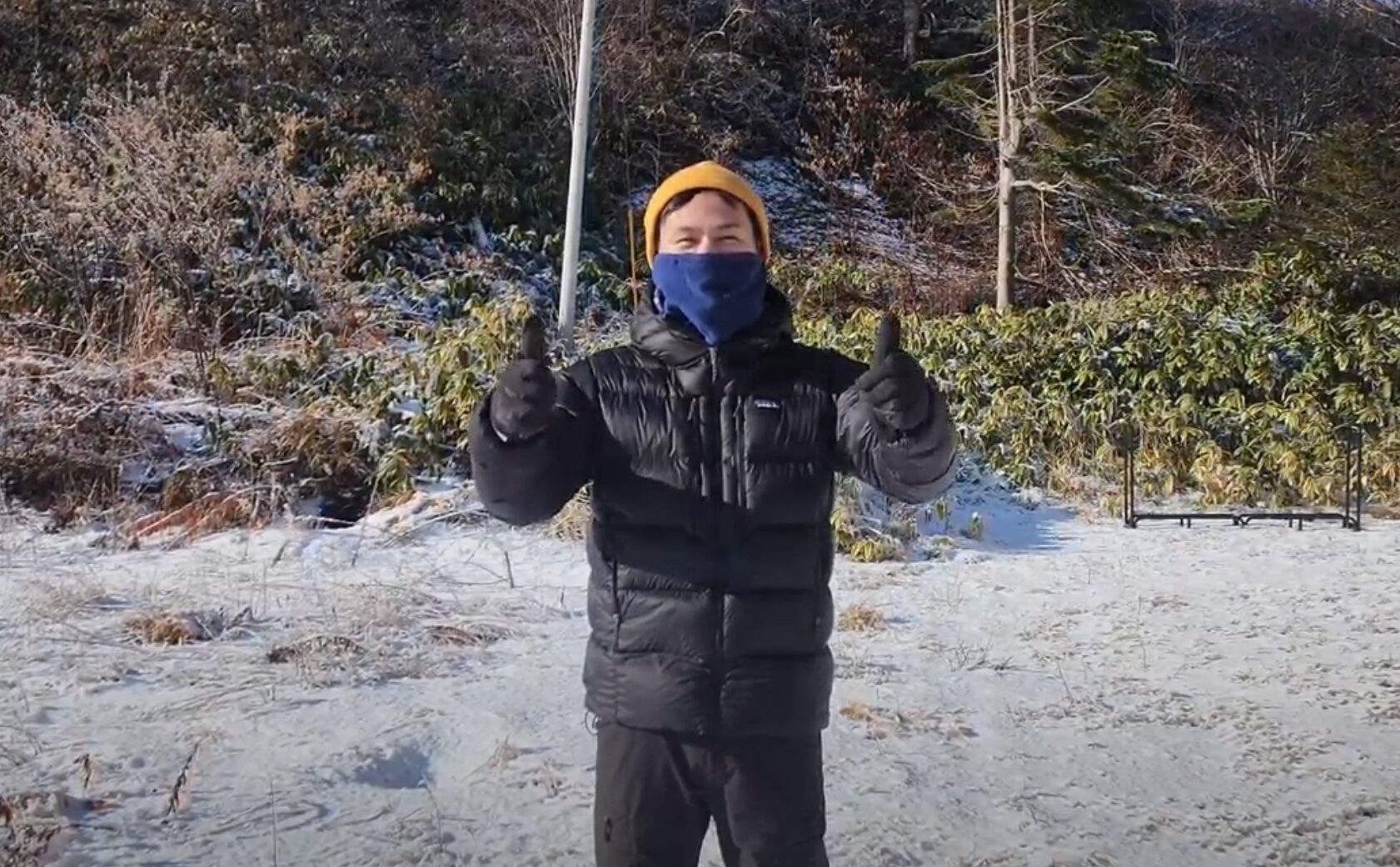
What to Wear in Eastern Hokkaido in Winter: A Practical Clothing Guide
2025年12月14日

ODAITO NEST おだいとうネスト
-野付半島まで10分の個室ゲストハウスー
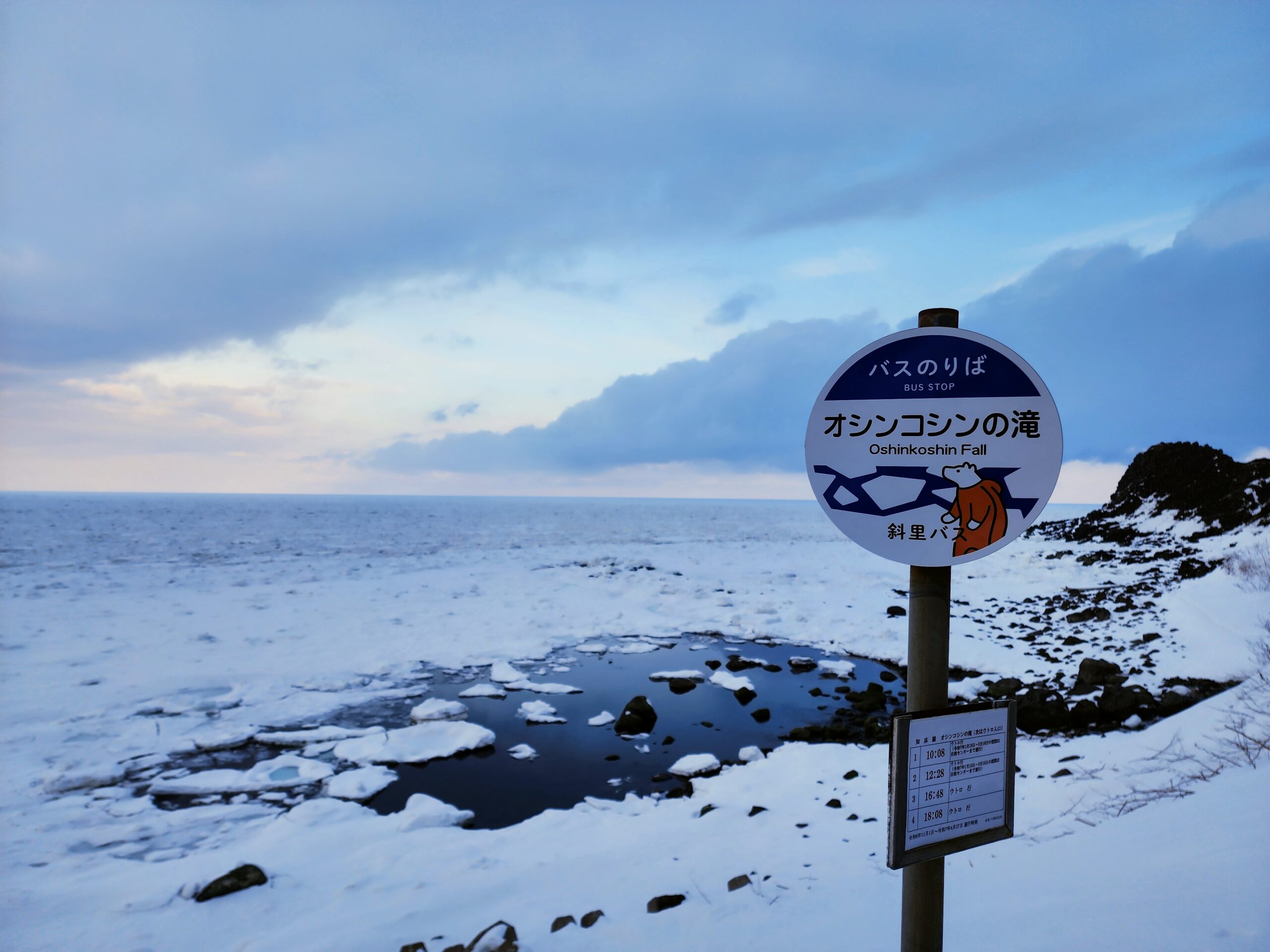
Winter in Eastern Hokkaido means one thing — drift ice.
It’s one of the most unique winter sights in Japan, when huge sheets of ice drift down from the Amur River in Russia and cover the Sea of Okhotsk.
Many people join the famous icebreaker cruise “Aurora” departing from Abashiri, but in this article, I’ll take you on a different route — a half-day self-drive trip where you can see the drift ice up close from the coast, from Abashiri all the way to Utoro in Shiretoko.
Drift ice usually arrives along the coast of the Sea of Okhotsk between late January and early March, with the peak season from mid-February to early March.
During this time, the sea turns completely white — it’s like watching a frozen desert stretching out to the horizon.
However, the 2025 season started much later than usual.
According to the Abashiri Local Meteorological Office, the first drift ice was observed on February 15, and it reached the coast on February 17 — both the latest dates on record since observations began in 1946.
The reason was simple: weaker north winds and slightly warmer sea temperatures in the Sea of Okhotsk delayed the southward drift.
As a result, travelers who came in early February found little or no ice, but by mid- to late February, large ice floes finally reached the coast, creating spectacular scenery around Shari and Utoro.
If you plan to visit in the future, the best chance to see the ice is between mid-February and early March.
Before you go, check the Sea Ice Information Center website for real-time updates.
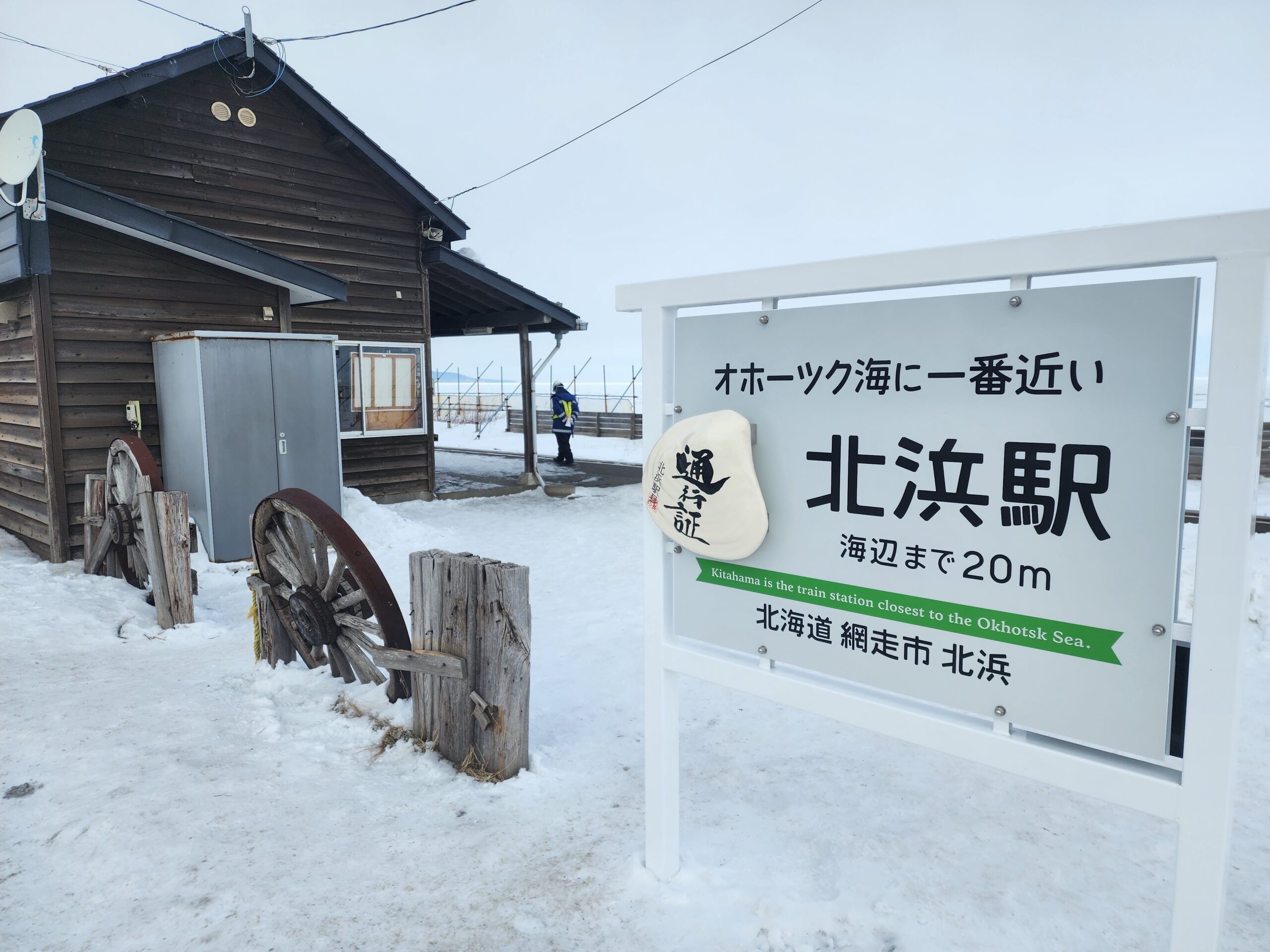
Our first stop is Kitahama Station, famous as the closest train station to the Sea of Okhotsk.
From the small wooden viewing tower next to the platform, you can see the ice spreading across the sea.
This is one of the few places where you can capture a train and drift ice in the same photo — a perfect Hokkaido winter shot.
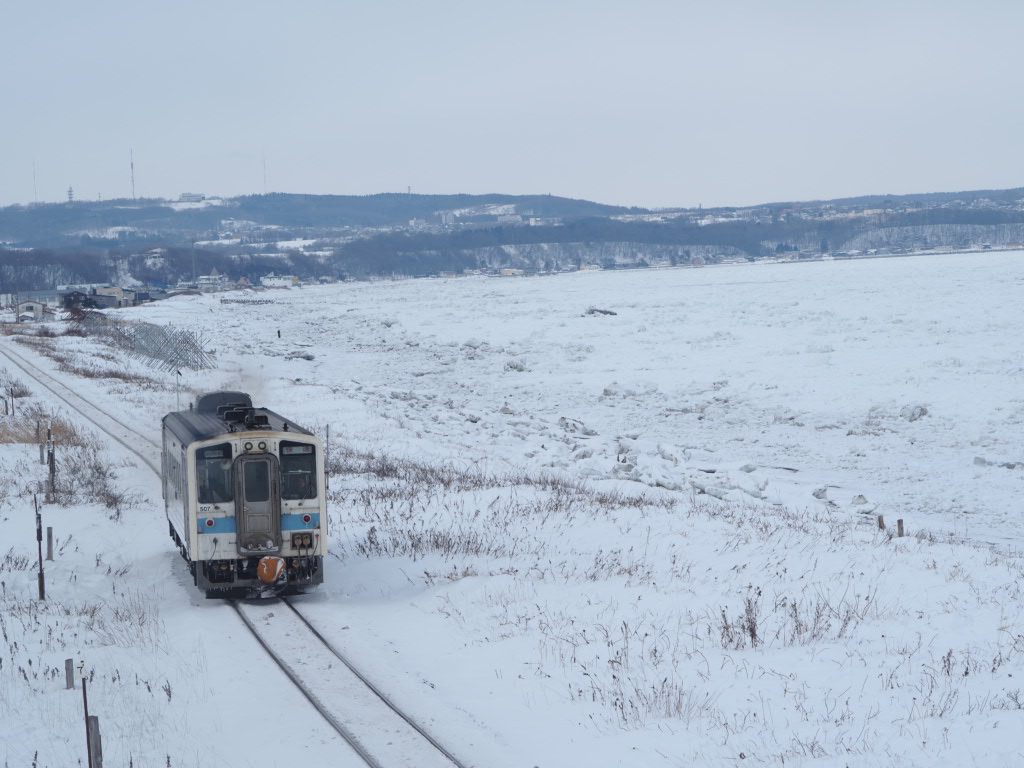
Since trains only pass once an hour, check the timetable in advance if you want that perfect moment.
On a clear day, the yellow local train, white ice, and blue sky create a truly striking contrast.

Next, drive to the Furetoi Observatory, located just off the main road toward Shari.
In summer it’s a campsite, but in winter it becomes a quiet lookout spot.
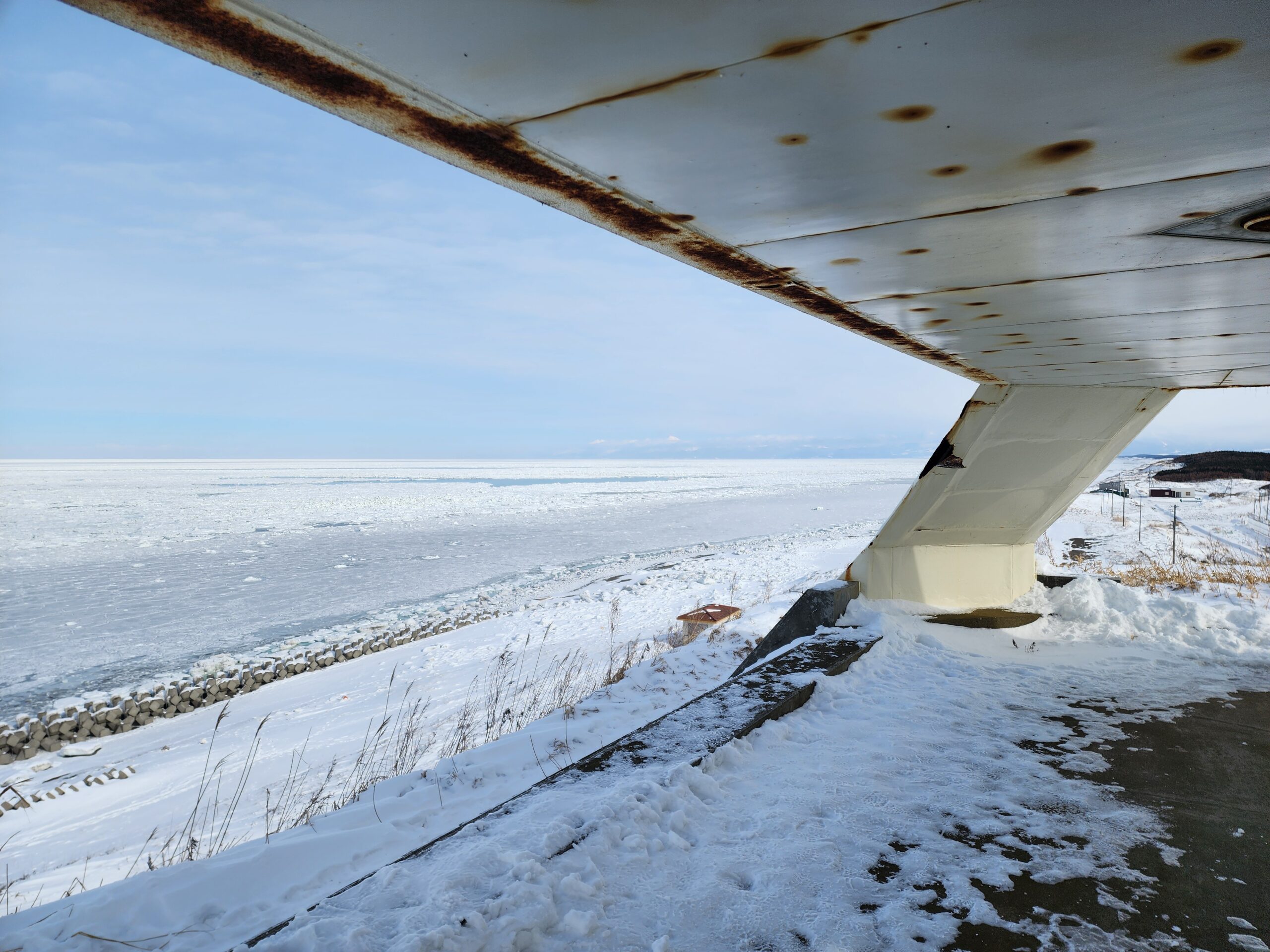
The short walk up to the observatory is easy, and once you’re there, you’ll see a vast panorama of the Sea of Okhotsk covered with ice.
It’s an ideal place to stop briefly between Abashiri and Shari.
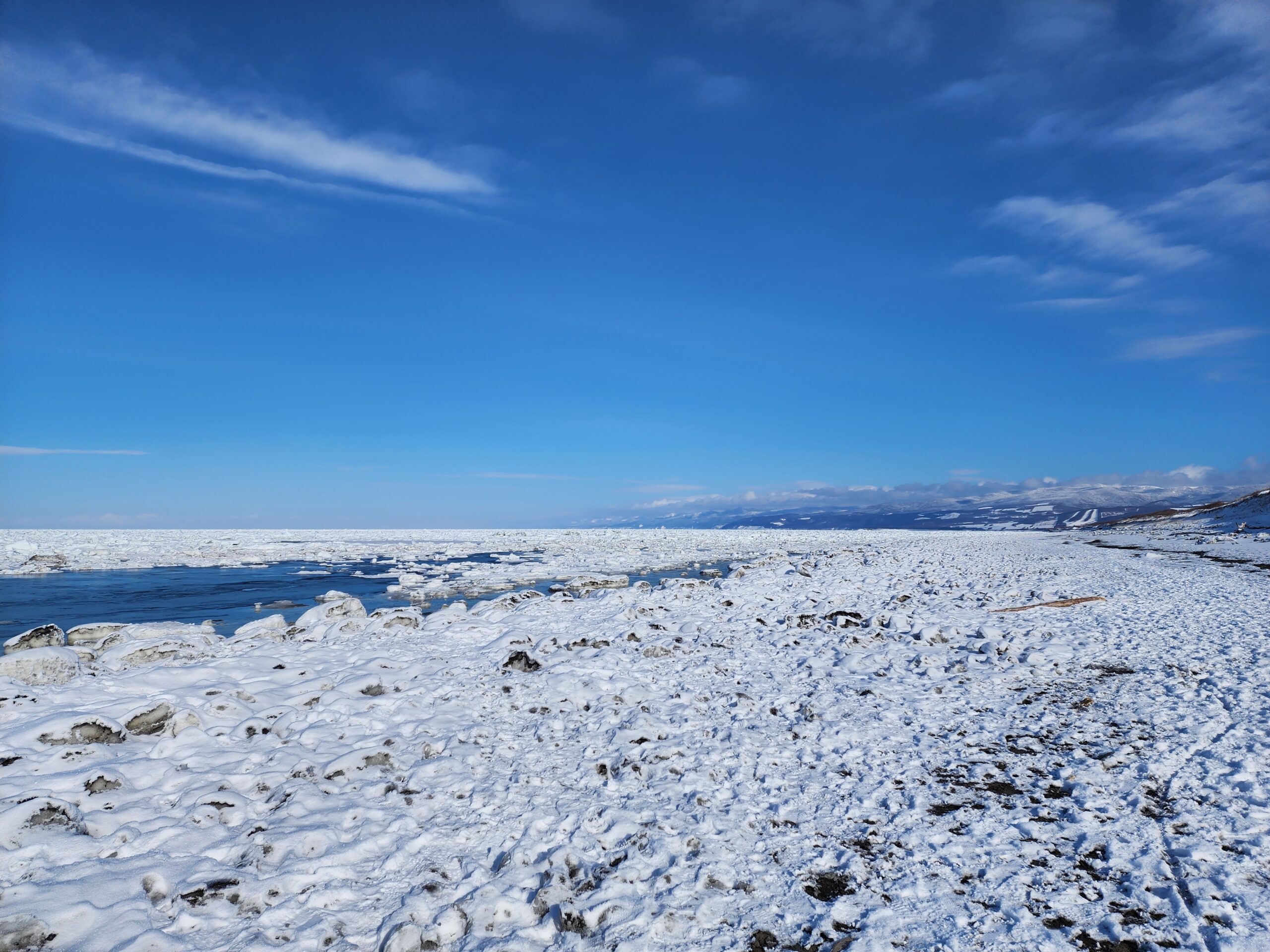
Continue east for about 30 minutes and you’ll reach the Ikushina Primeval Flower Garden.
In summer this area is filled with colorful wildflowers such as beach roses and peas,
but in winter it becomes one of the best places to see drift ice right in front of you.
On a clear day, you can even see the Shiretoko mountain range beyond the white horizon — an unforgettable view.
Be careful, though: even if the ice looks solid, the sea underneath is deep and unpredictable.
Never step onto the ice.

Keep driving east toward Utoro and you’ll reach Oshinkoshin Falls, one of Shiretoko’s best-known landmarks.
In a cold winter the waterfall freezes completely, but during mild years it keeps flowing — both are beautiful in their own way.
Cross the road from the parking lot and you’ll find a small bus stop.
Try taking a photo with the bus stop and the drift ice in the background — it’s a fun way to capture the atmosphere of winter in Hokkaido.
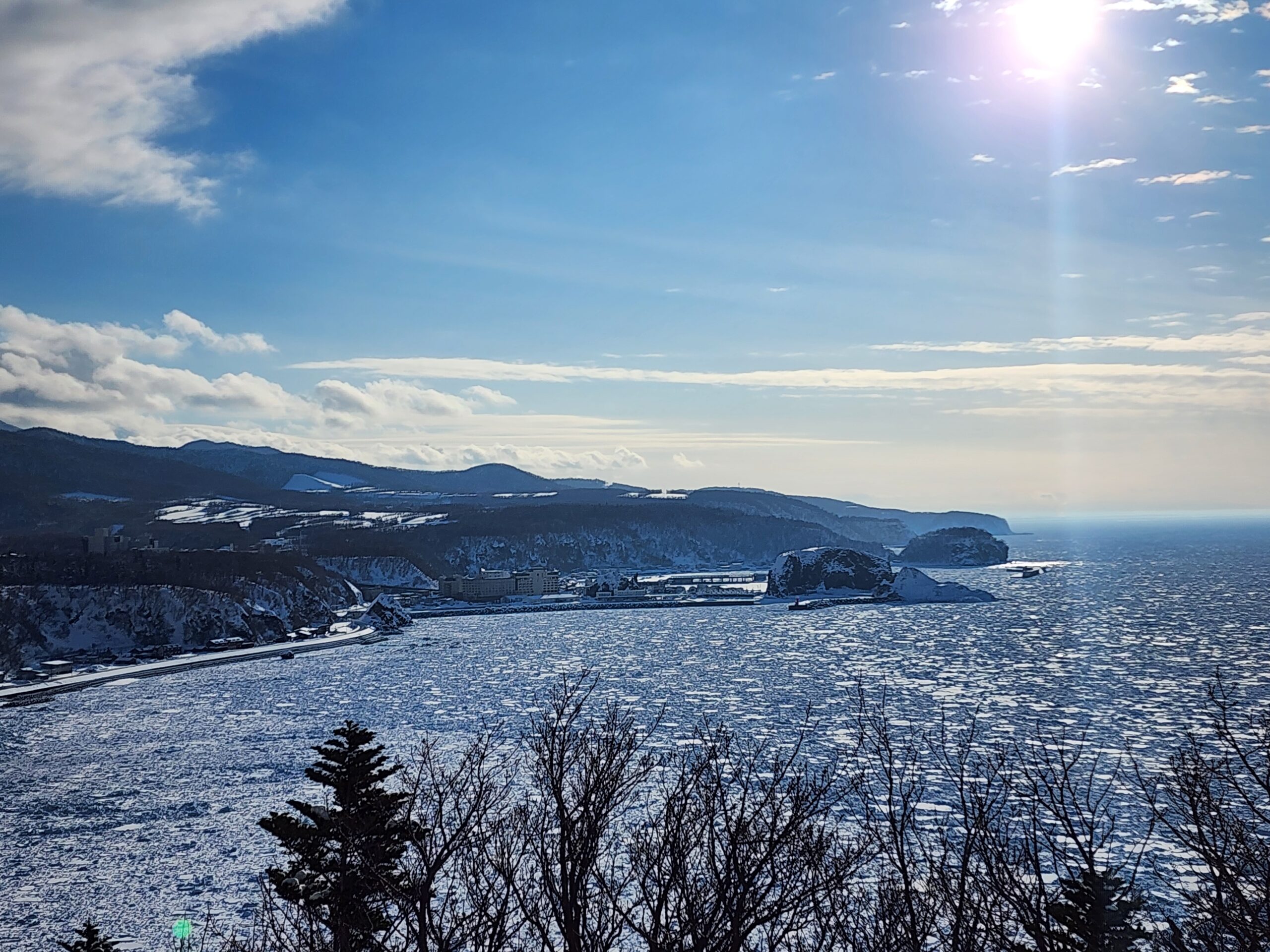
Just before reaching the Shiretoko Nature Center, stop at Puyuni Cape, a scenic viewpoint overlooking the Sea of Okhotsk.
From here you can see the coastline stretching toward Abashiri and the sea completely filled with ice.
This spot is also known for its beautiful sunsets,
so if you can, time your visit for late afternoon to see the orange glow reflecting on the ice.
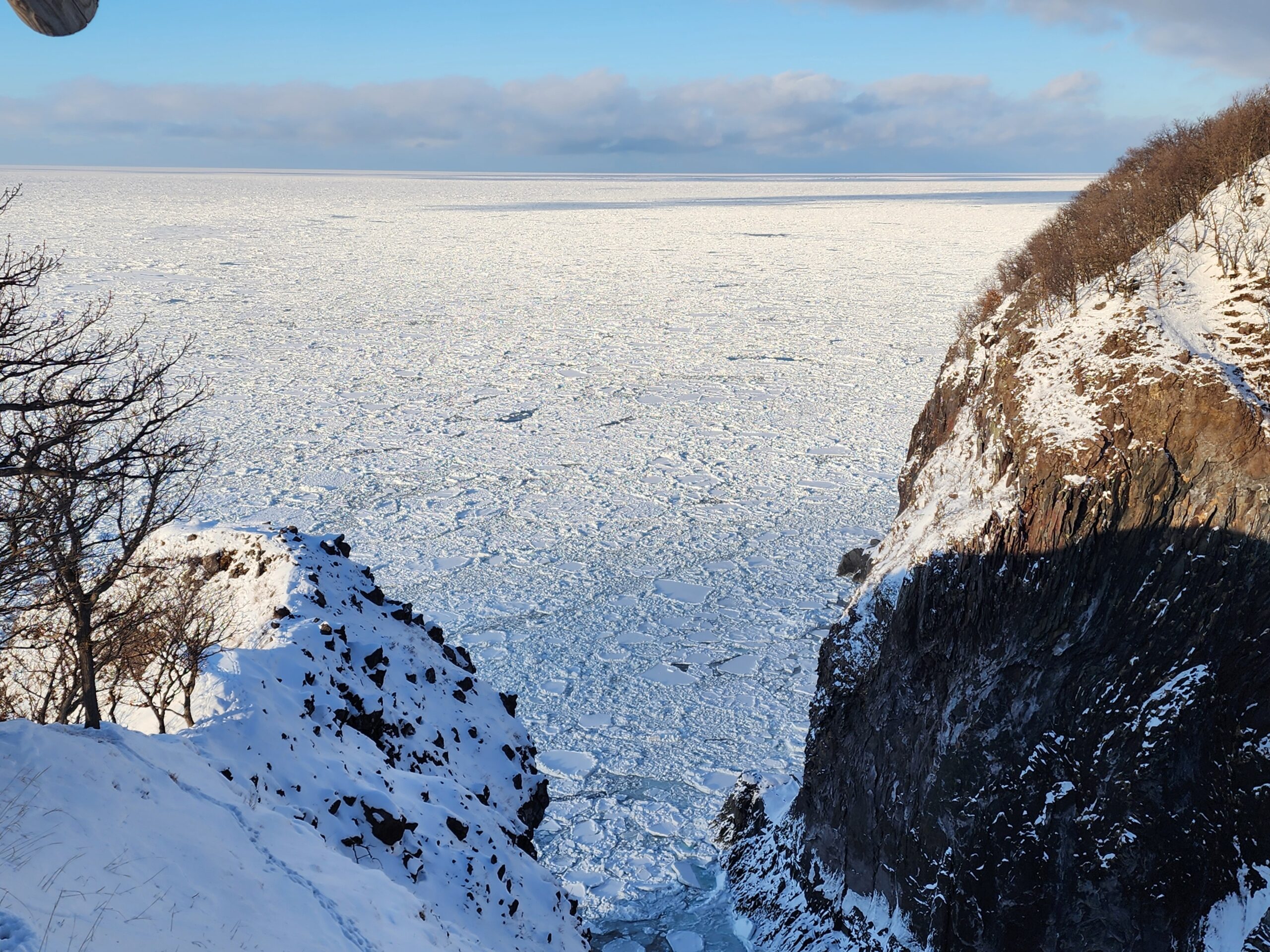
The last stop is Furepe Falls, located a 20-minute walk from the Shiretoko Nature Center.
You can rent snowshoes at the center if there’s fresh snow,
but usually the path is packed and easy to walk even with winter boots.
In winter, the waterfall itself freezes into a curtain of ice, creating a magical scene against the cliffs.
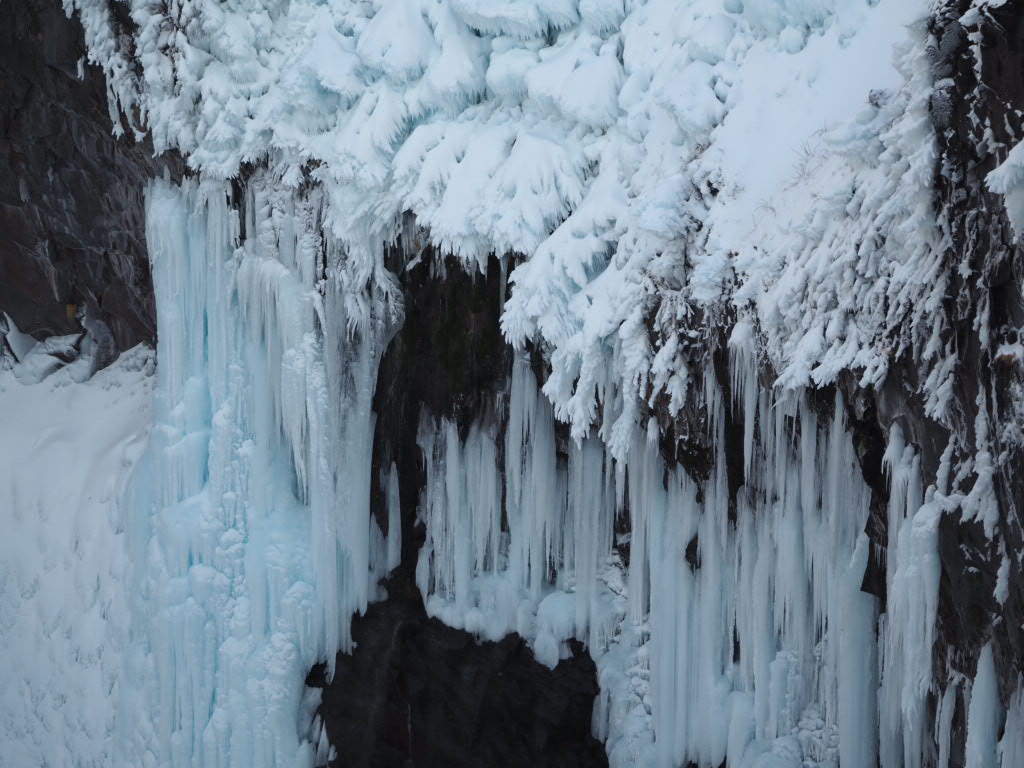
Bring a telephoto lens if you want to capture it clearly — it’s difficult to shoot with a phone.
This route follows the coastline from Kitahama to Utoro, where you can see the drift ice almost the entire way.
The total distance is not long, so you can comfortably complete it in half a day.
If you’re not staying overnight in Utoro, remember that you’ll need to drive the same route back, so plan your schedule with some extra time.
Drift ice can change day by day depending on wind direction, so even if it’s visible today, it might disappear tomorrow.
Drift ice doesn’t stop at Shiretoko!
When the north wind continues to blow over the Sea of Okhotsk, the ice moves south, wrapping around the Shiretoko Peninsula and reaching the eastern side of Rausu.
In some years, it drifts even farther—to the Notsuke Peninsula and occasionally as far as Nemuro.
In Rausu, you can often see the ice floating close to fishing boats, and it’s also a great place to spot Steller’s sea eagles and white-tailed eagles resting on the ice.
Farther south, around the Notsuke Peninsula, the frozen landscape stretches across the lagoon, creating one of the most surreal winter views in Eastern Hokkaido.
From Odaito fishing port or nearby viewpoints like Narawara and Todowara, you can watch the ice merge into the horizon.
In particularly cold years, the edge of the drift even reaches Nemuro, at the southeastern tip of Hokkaido.
It doesn’t happen every season, but when it does, you can see thin sheets of ice floating offshore — marking the farthest southern reach of the Sea of Okhotsk drift.
